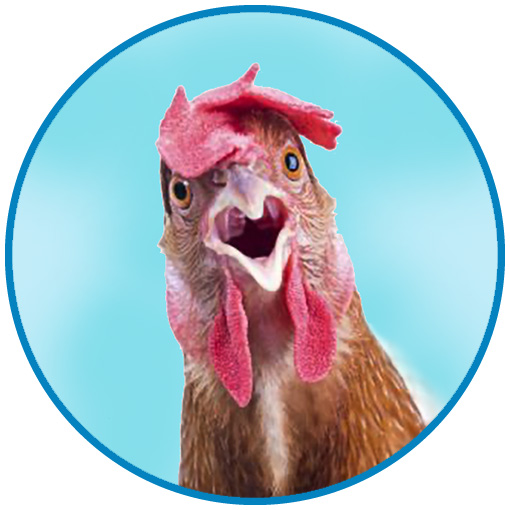
From early in life, chickens have good eyesight and can see quite clearly. Soon after they hatch, chicks are able to avoid obstacles, visually moving objects, and accurately peck at objects. They can also tell the difference between shallow and deep surfaces. Chickens attain peak sensitivity to spatial detail within 48 hours after hatching. In contrast, improvement in visual acuity takes weeks or months for kittens, monkeys, and human infants.
Like most birds, domestic poultry have eyes on the sides of their heads, which gives them a wide field of view in order to detect predators. Many prey species, including mammals such as rabbits, have eyes on the sides of their heads. This type of vision is called monocular vision. Hawks and owls are examples of birds that have binocular vision. Hawks need very acute vision and must have superior depth perception in order to catch prey. Binocular vision allows much better depth perception but a smaller field of view. Most birds, including chickens, cannot move their eyes in their sockets very much, so they move their heads instead.
Most species of birds have more highly developed color vision than humans. Many species of birds can see into the ultraviolet range of the spectrum, allowing them to detect differences in appearances that we cannot see. Perception of color is very important to birds, not just as part of daily survival, but as a means of determining the fitness of possible mates. A more colorful male of a species may pass on a survival advantage to his offspring, thus making him more attractive to females of the species.
